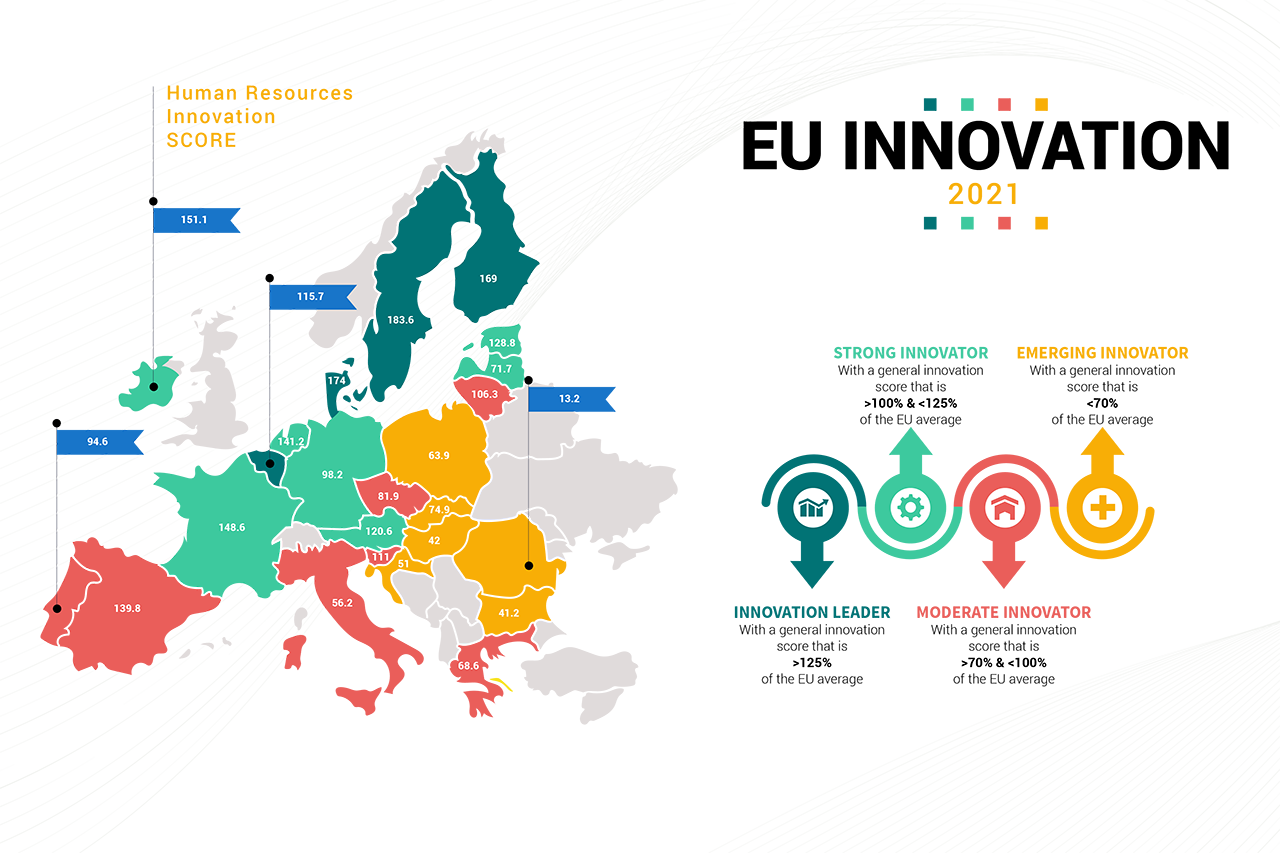Linkus has just produced an infograhics about the European Commission’s 2021 innovation score. Among other important factors, this report measures the availability of a high-skilled workforce within the EU.
We have no doubt that you’ve spent the last year wondering: what’s wrong with Belgium, in particular when it comes to the “human resources” innovation score?
Table of Contents
What is the 2021 EU innovation score?
First of all, what are we actually talking about then we talk about the European Commission’s 2021 innovation score?
The European Innovation Scoreboard (EIS), published annually, provides a comparative assessment of the state of innovation and research policy in the EU Member States.
The report reviews data from all EU Member States to identify their strengths and weaknesses.
In a nutshell, the idea is to help countries to
where to focus their efforts in order to innovate more and better.
The EIS 2021 report is the first edition published using new indicators for digitisation and sustainable innovation.
At the same time, it does not fully take into account the impact of the Covid pandemic.
What are the criteria of the innovation score?
The EIS 2021 distinguishes four main types of activities – framework conditions, investments, innovation activities and impacts.
The framework conditions are 3: human resources (e.g. new STEM graduates, population aged 25-34 with tertiary education), attractiveness of research systems (e.g. top 10% of publications) and digitalisation (e.g. broadband penetration).
Investment includes R&D and venture capital expenditure, both public and private (e.g. whether companies provide training to develop or improve the ICT skills of their staff or not).
Innovation activities refer to patent, trademark and design applications, among other factors.
Finally, impacts is one of those general terms that encompass buzzy concepts, such as “knowledge-intensive activities” or “sales of innovative products”, as well as fanciful accounts of air emissions, environmental sustainability and resource productivity.
How are the EU countries doing in general innovation?
Belgium, Finland, Sweden and Denmark lead in innovation.
Innovation performance is well above the EU average.
Austria, Germany, France, Estonia, Ireland, Luxembourg and the Netherlands are well above the EU average performance.
On the contrary, the Czech Republic, Portugal, Italy, Malta, Cyprus, Greece, Lithuania, Spain and Slovenia are below the EU average. These countries are moderate innovators.
Last, but not least, Poland, Croatia, Latvia, Hungary, Bulgaria, Slovakia and Romania are
emerging innovators, which is a nice way to say that their performance is well below the EU average.
The curios case of Belgium and human resources innovation
Belgium is a leader in innovation.
Its strengths lie in attractive research systems, the use of information technology and in ‘Linkages’ (which is a fancy word for the level of networking). In concrete terms, we are talking about the number of foreign PhD students, innovative SMEs, companies offering training.
Although you wouldn’t know it by looking around the Brussels ring, Belgium is also doing well when it comes to climate change innovation.
Yet, when it comes to human resources innovation, Belgium seems to lose several points, even dropping to 16th place in Europe.
What can be done about it?
The curious case of Belgium regarding innovation in human resources is quickly illustrated.
In this wonderful, contradictory country, innovation is present and almost ingrained in the DNA of its indigenous and expatriate population.
Yet, it is often harnessed in a sense of bureaucratic hierarchy: as if innovation were a skill, a tool, and not a way of thinking differently and radically.
For this reason, Linkus, before being an application, is a vision of the world of work and recruitment.
This vision is based on the idea that time should be spent working, rather than looking for work.
And in this spirit, we wish you a 2022 full of innovation in human resources, in Belgium, as in the rest of Europe.





